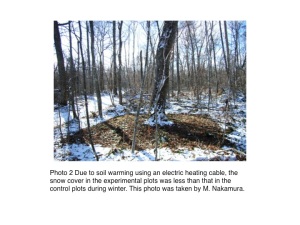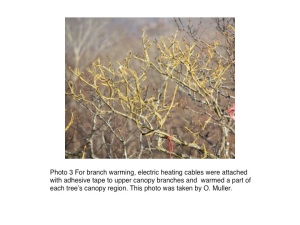Beavers living in the River Otter in Devon will be allowed to remain in the wild following a historic decision by Natural England to allow their ‘re-introduction’.
Natural England’s Board today confirmed that a licence will be issued to Devon Wildlife Trust (DWT), permitting “the managed release into the wild of beavers currently resident in the River Otter catchment in Devon, on a 5 year trial basis.”
The move is being applauded by local people who want the beavers to remain in the River Otter, landowner Clinton Devon Estates, DWT and Friends of the Earth, which had started legal proceedings over earlier Government plans trap the beavers and hold them in zoo or other secure facility.
According to a statement released by NE, DWT’s licence application was “thoroughly assessed against the internationally recognised guidelines published by the International Union for the Conservation of Nature.”
“Under the terms of the licence, by September at the latest, Devon Wildlife Trust must develop a management strategy to deal quickly with any undesirable impacts which the beavers may have on the River Otter during the trial period, as well as a monitoring programme to study their impacts.”
Another conditions stipulate that the beavers must be confirmed as being of are of Eurasian origin, and free of the rare but unpleasant tapeworm Echinococcus multilocularis, which can transfer to other wildlife and to people.
England’s first otters in hundreds of years!
“We are delighted by Natural England’s decision to grant us a licence to give these beavers a long term future on the River Otter”, said Harry Barton, Chief Executive of Devon Wildlife Trust.
“The beavers of the River Otter are the first breeding population in the English countryside for hundreds of years. We believe they can play a positive role in the landscapes of the 21st century through their ability to restore our rivers to their former glories.
“We know from our own research and research done in Europe that beavers are excellent aquatic-engineers improving the flood and drought resilience of our countryside and increasing the water quality of our rivers. They are incredibly industrious animals and their hard work has benefits for people and wildlife.”
For the last six months DWT has been working with Defra, Natural England, local farmers and the wider community to secure a solution that would see the disease risk addressed and the beavers remain.
“This project will measure the impact that these beavers have on the local environment, on the local economy and on local people”, said Peter Burgess, DWT’s Conservation Manager, who led the licence application.
“The evidence from elsewhere shows that beavers should have an overwhelmingly positive effect, but this is the first time the animals will be living in a well-populated, agriculturally productive English landscape for hundreds of years.”
But he added: “We need to ensure that any negative impacts of beavers are avoided. This will mean working alongside the Environment Agency, local authorities and landowners to manage any problems that may arise over the coming years.”
Clinton Devon Estates, the biggest landowner on the lower River Otter, also welcomes the awarding of the licence. Dr Sam Bridgewater, the estate’s Nature Conservation Manager, says that the focus of the debate needs to be 20 to 30 years from now:
“We need to look at what’s happened on the continent where there were fewer than 2000 beavers at the start of the 20th Century but there are now over 600,000. If their numbers increase, then it is inevitable that they will eventually start to engineer their local environment.
“This will bring all kinds of benefits such as a potential slowing down of flood waters and an increase in the diversity of wildlife habitats, but will also likely cause some grief. I think a key issue for the authorities to address is that mechanisms are put in place to allow any conflicts to be avoided quickly in the future.”
Over 10,000 messages of support for the beavers
There has been overwhelming national and local support for the beavers to remain in the wild. Over 10,000 people sent messages to the Minister for the Natural Environment, and at a recent event in the village of Ottery St. Mary more than 100 people turned up, the vast majority in support of the beavers.
“This is great news for Devon’s beavers”, said Friends of the Earth campaigner Alasdair Cameron – who had earlier led the group’s application for a judicial review of an earlier decision to trap the beavers citing violations of the Habitats Directive.
“Beavers add to Britain’s rich natural heritage and can bring huge benefits to the local environment, such as boosting wildlife and reducing flooding risks. Hopefully we’ll now see renewed efforts to reintroduce beavers to other suitable locations right across the country.”
Natural England’s Chairman Andrew Sells confirmed that future decisions on the release of beavers will “in large part” be informed by the results of this trial, adding: “Reintroduction of a species is a complicated and emotive subject and we have considered this application very carefully.
“Responses to our written consultation and public meetings have been generally positive and we are now satisfied with Devon Wildlife Trust’s plans for managing and monitoring the project, which will allow important evidence to be gathered during the trial on any impacts which the beavers may have.”
But he warned: “The unauthorised release of beavers remains illegal and Natural England does not expect to grant any other licences for beaver release during this trial period.”
Trapping and testing of the animals for the Echinococcus multilocularis tapeworm will be carried out by the Animal and Plant Health Agency under a separate licence that was granted towards the end of 2014.
Support: Devon Wildlife Trust now faces the task of funding the River Otter Beaver Project. An initial call for donations led to £45,000 being raised in just two months. However the cost of the five year monitoring project is estimated to run well above this figure. DWT is now asking supporters of the beavers to donate via its website or by phone on 01392 279244.
Oliver Tickell edits The Ecologist.










